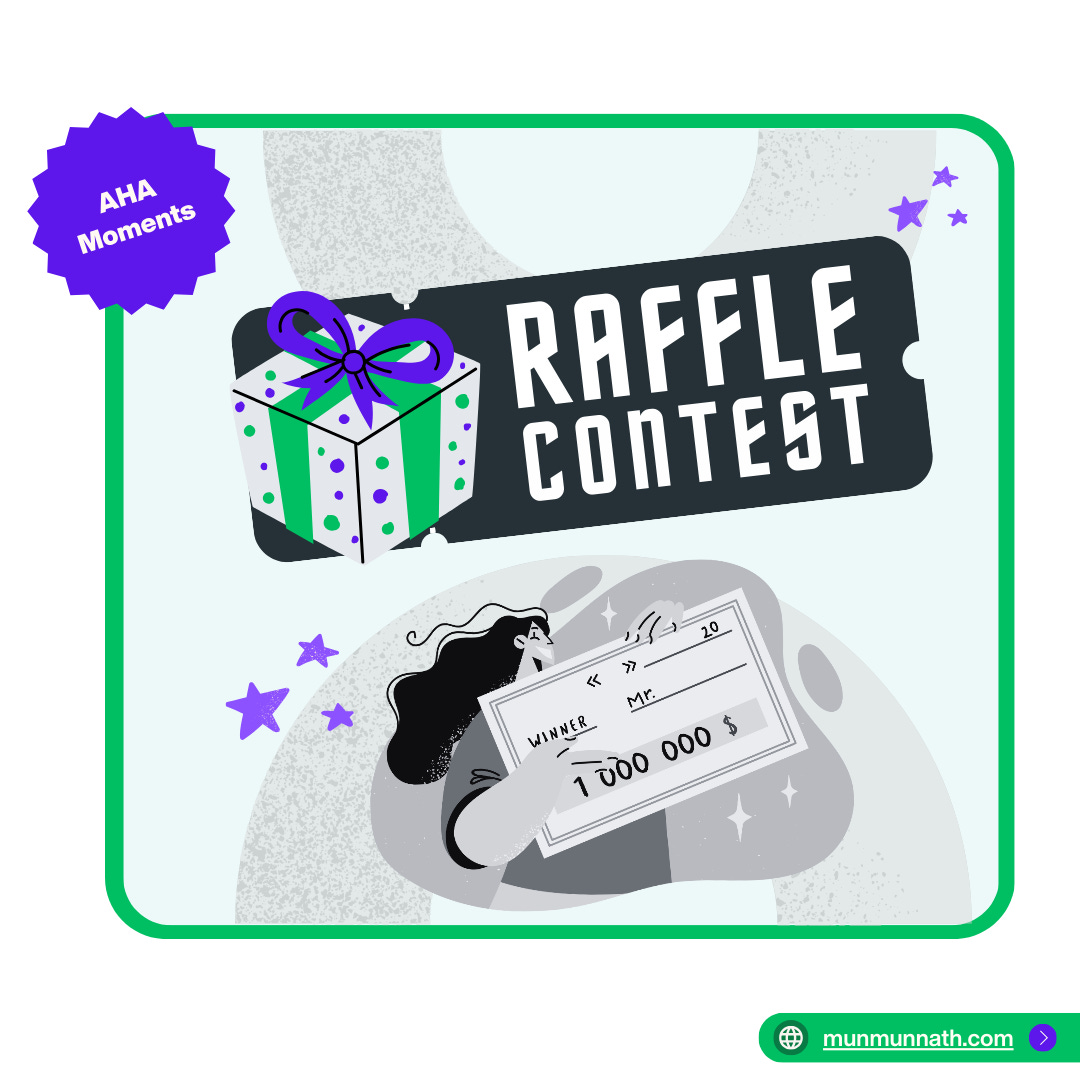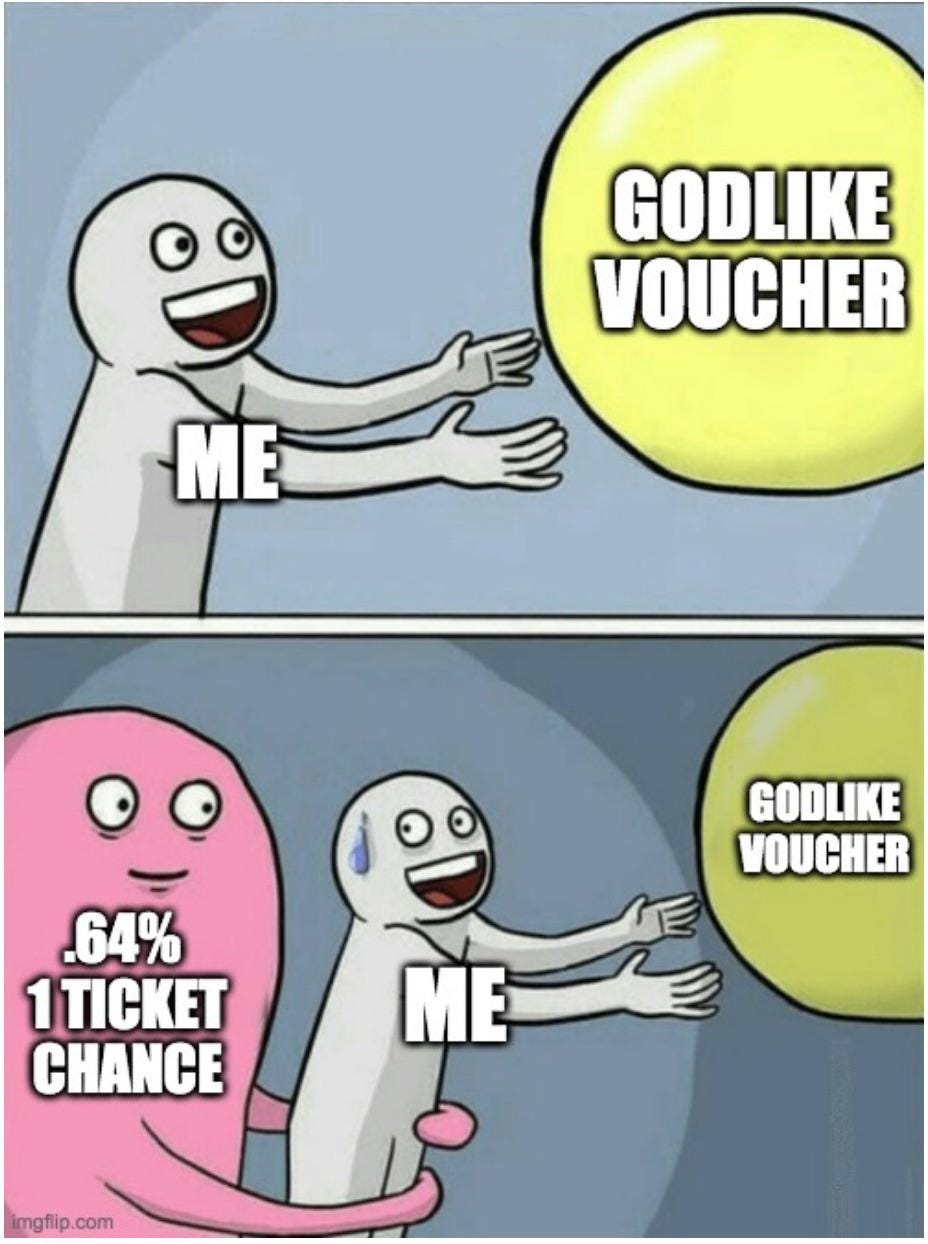19. What to get a chance to win a Million $?
The Consumer Psychology of Raffles
The idea for this week’s newsletter came while listening to Morgan Housel talk about how Americans spend more on lottery tickets than on movies, video games, and concerts combined.
The lowest-income households in the US spend an average of $412 per year on lottery tickets, more than four times what the highest-income households spend. Given that most of the spending on lottery tickets is a loss, he wonders how people with limited financial means blow up 400$ on a game of chance.
According to him, the psychology behind this behavior seems to be that low-income players may consider lotteries a “social equalizer” in which everyone has an equal chance to win in an otherwise rigged system.
In a study conducted in Germany, researchers surveyed lottery players. They found that people play the lottery because they desire to participate in a world that is generally out of their reach. “Although the chances of winning are low, playing the lottery at least creates hope for material improvement and a higher social status that cannot be achieved through conventional channels.”, they wrote.
A similar game of chance that marketers often indulge in is raffle campaigns. A quick look at some of the campaigns I came across revealed a few standard things:
1) They all mean to drive purchase (hence, similar to the lottery, there is money involved)
2) They are usually launched to celebrate a special occasion for the brand, such as a new product launch, anniversary, or seasonal events.
What is the actual (or imagined) consumer psychology behind this?
1. The Thrill of the Chase
One of the primary psychological drivers behind raffle participation is the anticipation and excitement it generates. No matter how slim the odds are, the prospect of winning ignites our imagination and the pleasure centers in our brains.
2. The Power of Possibility
As in the case of the lottery, regardless of the odds, each ticket represents a chance, a what-if scenario that entices the mind. This taps into our innate hope and aspiration for positive outcomes, often disproportionate to the probability of winning.
3. Community Engagement
Raffles often thrive in communal settings, whether at charity events, online platforms, or social gatherings. Seeing others participate validates our decision to join the raffle.
4. Value Perception
The contrast between the ticket price and the prize value amplifies the perceived value of the prize, making the proposition even more enticing. This skewed value perception can make participation seem like a 'smart gamble' despite the odds.
One of the raffle campaigns I ran offered the chance to win a car for the purchase of car insurance. At the time of launch, I imagined it would go viral, but the actual results were quite disappointing. I find raffles can be quite unpredictable as a marketing tactic, yet they remain popular among brand managers.
To increase the chances of the success of your next raffle campaign, here are some tips based on my experience -
1. Clearly define your objectives to raise awareness of a new product, service, or brand visibility. Is it to drive purchase or community engagement? Review your mechanics carefully to check if it will aid or hinder the planned objective
2. Select a prize that will generate excitement in your target audience. It doesn’t have to be expensive but should be valuable enough to motivate participation. It can be something new, exclusive, or too good to be true.
3. Optimize the entry process to support your objectives. Make it easy to understand, as complex entry requirements can deter potential participants.
4. Utilize the power of social proof by encouraging participants to share by offering additional entries for referrals or social shares. Also, showcase previous winners (with their permission) to provide tangible evidence of your contest’s legitimacy.
5. Engage participants throughout the contest, especially during the drawing process, keeping it as transparent as possible.
Happy Raffling!







